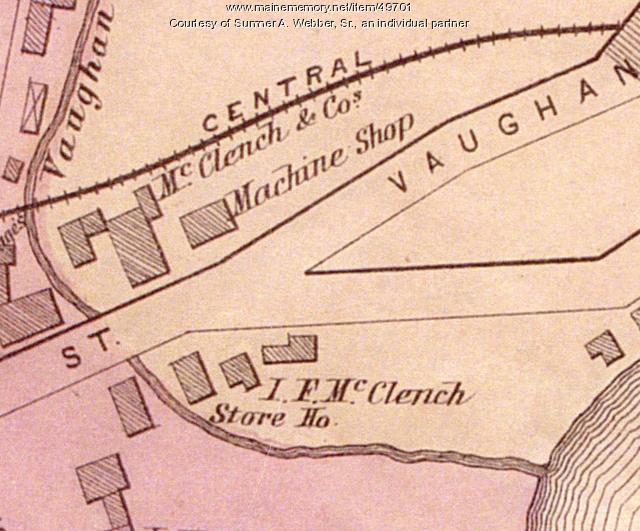Keywords: stream
Item 17087
Contributed by: Caribou Public Library Date: circa 1907 Location: Caribou Media: Postcard
Item 10862
Contributed by: Aroostook County Historical and Art Museum Date: circa 1890 Media: Photographic print
Item 150270
Kenduskeag Stream Urban Renewal Project, Bangor, 1968-1975
Contributed by: Maine Historical Society Date: 1968–1975 Location: Bangor; Bangor Client: City of Bangor Architect: Eaton W. Tarbell
Exhibit
Melting snow, ice, warmer temperatures, and rain sometimes bring floods to Maine's many rivers and streams. Floods are most frequent in the spring, but can occur at any season.
Exhibit
Student Exhibit: Ice Harvesting
Ice Harvesting was a big industry on the Kennebec River. Several million tons of ice could be harvested in a few weeks. In 1886 the Kennebec River topped the million ton on ice production.
Site Page
Historic Hallowell - The Vaughan Stream & Sawmills
"The Vaughan Stream was hard to navigate because of its small size. But one way that people used the Vaughan Stream was for power."
Site Page
Historic Hallowell - Industry at the Mouth of the Vaughan Stream
"Industry at the Mouth of the Vaughan Stream Jake Allen, Ethan Ballew & Avery Page McClench Machine Shop, Hallowell, 1879Courtesy of Sumner A."
Story
Hand carrying water in Marshfield
by Dorothy Gardner
Ways of getting water in rural Maine. From fetching water from a stream to having a well.
Story
Restoring the Penobscot River
by John Banks
My role as the Director of the Department of Natural Resources for the Penobscot Indian Nation
Lesson Plan
Wabanaki Studies: Stewarding Natural Resources
Grade Level: 3-5
Content Area: Science & Engineering, Social Studies
This lesson plan will introduce elementary-grade students to the concepts and importance of Traditional Ecological Knowledge (TEK) and Indigenous Knowledge (IK), taught and understood through oral history to generations of Wabanaki people. Students will engage in discussions about how humans can be stewards of the local ecosystem, and how non-Native Maine citizens can listen to, learn from, and amplify the voices of Wabanaki neighbors to assist in the future of a sustainable environment. Students will learn about Wabanaki artists, teachers, and leaders from the past and present to help contextualize the concepts and ideas in this lesson, and learn about how Wabanaki youth are carrying tradition forward into the future.
Lesson Plan
Grade Level: 6-8, 9-12, Postsecondary
Content Area: Science & Engineering, Social Studies
This lesson presents an overview of the history of the fur trade in Maine with a focus on the 17th and 18th centuries, on how fashion influenced that trade, and how that trade impacted Indigenous peoples and the environment.
















